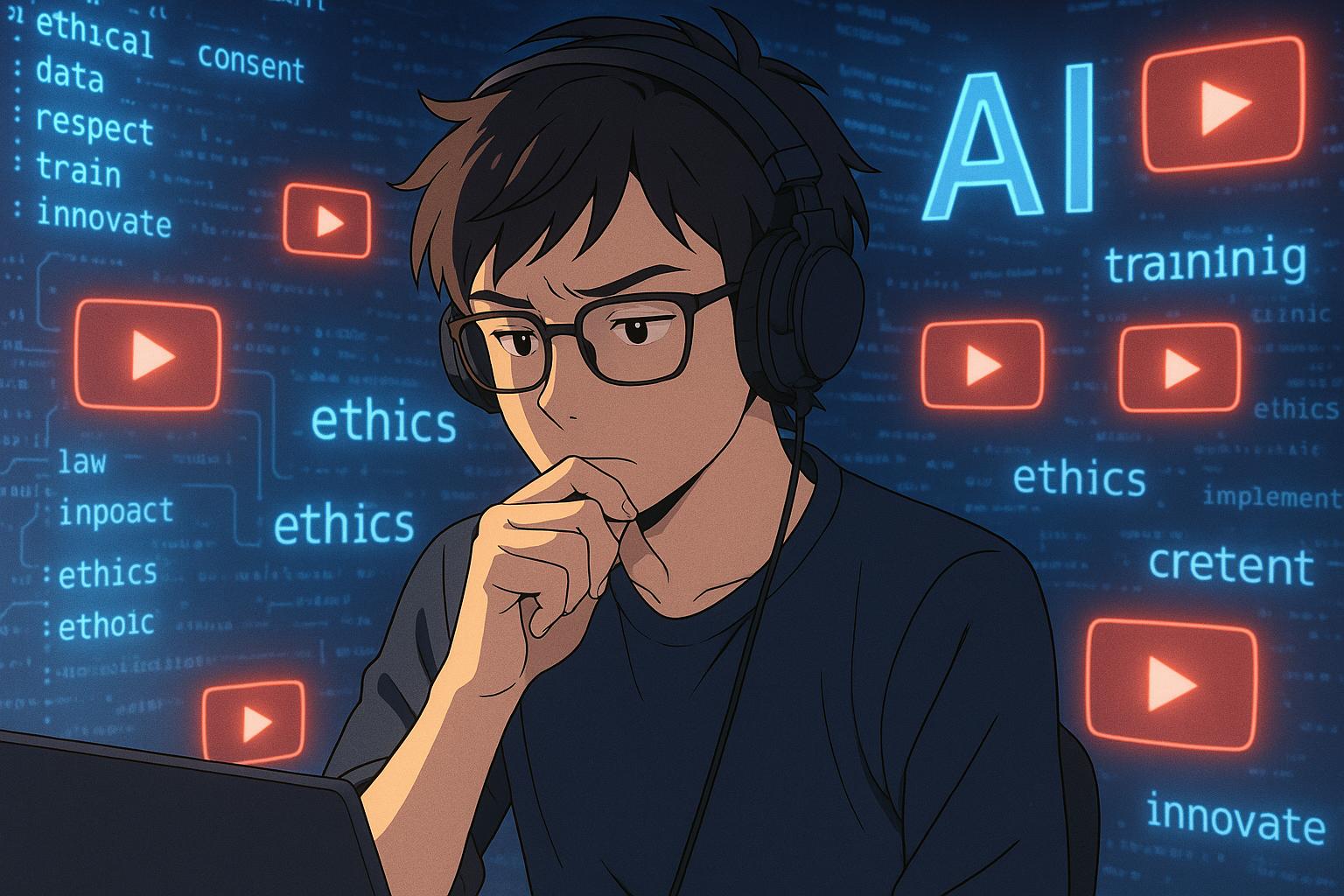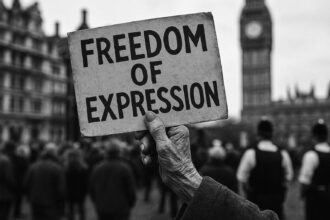A rising number of YouTubers are voluntarily allowing their videos to be used for AI training without payment, aiming to influence how AI models develop. This consent-based approach marks a shift in creator control, but concerns remain over inconsistent practices and calls for fair compensation.
An emerging trend is reshaping the dynamics between digital content creators and artificial intelligence firms, as a growing number of YouTubers are willingly permitting their videos to be used for AI training. Surprisingly, many are doing so without any financial compensation, viewing their participation as a way to influence the future landscape of tech tools rather than as a source of income. This shift has raised questions about the ethical implications of AI training, particularly concerning the treatment of creative content.
Under the current framework established by YouTube, creators have the option to consent to their videos being utilized by AI developers—around 18 major firms—by simply ticking a box. If creators do not opt in, their videos are safe from being used for AI training purposes, meaning participation is entirely voluntary. This consent-based model is crucial as it stands in stark contrast to previous practices where content was often used without creators’ prior knowledge or approval.
Creators choosing to engage in this initiative may do so believing that by allowing their content to be part of AI training, they are enhancing its visibility in AI-generated outputs. This strategic decision allows them to potentially shape how generative AI interprets and presents information, with implications stretching beyond mere acknowledgment; it could influence responses generated by technologies like large language models and AI-driven coding tools.
Oxylabs has taken the lead in this initiative, recently launching what it describes as the first consent-based YouTube dataset, comprising four million videos from one million distinct channels. Julius Černiauskas, the CEO of Oxylabs, remarked that this model not only streamlines the process for AI developers seeking ethical data but also reassures creators about how their work is being utilised. He noted, “In the ecosystem aiming to find a fair balance between respecting copyright and facilitating innovation, YouTube streamlining consent giving for AI training and providing creators with flexibility is an important step forward.”
Despite the apparent benefits of this model, concerns loom about the broader implications for creators’ rights. While some are embracing the opportunity, others are wary, particularly in light of reports indicating that many popular creators, including major names like MrBeast and Marques Brownlee, had their content used for AI training without prior consent. This inconsistency has raised alarms about the need for clearer guidelines and structured agreements related to online content use for AI development. Advocates call for strengthened protections to ensure creators are duly informed and compensated for their contributions.
Interestingly, another trend is emerging where creators are actively selling unused footage to AI companies for training purposes. Reports indicate that firms like OpenAI and Alphabet’s Google are paying between $1 and $4 per minute for exclusive access to this unique footage. Many creators are capitalising on their unused content, which has become increasingly valuable as AI companies seek high-quality datasets for training. This practice starkly contrasts the earlier paradigm where many creators remained unaware that their published content was repurposed for AI training without any agreement.
As discussions surrounding the economic ramifications of AI continue to unfold, figures like actor Joseph Gordon-Levitt have voiced concerns regarding the unacknowledged use of creative work to train AI models. Advocating for fair compensation and recognition of artistic contributions, Gordon-Levitt’s critique emphasises the urgent need for protections that ensure creatives are supported in a rapidly evolving landscape.
Navigating this complex terrain where innovative technologies intersect with copyright issues requires a cooperative approach. As AI continues to become intertwined with creative content, establishing a framework that respects both the rights of creators and the need for ethical AI development could prove critical for the future of content creation and technology.
 Reference Map:
Reference Map:
- Paragraph 1 – [1]
- Paragraph 2 – [1], [3], [4]
- Paragraph 3 – [1], [5]
- Paragraph 4 – [2], [6]
- Paragraph 5 – [7]
Source: Noah Wire Services
- https://www.techradar.com/computing/artificial-intelligence/thousands-of-youtubers-are-letting-ai-firms-train-on-their-original-videos-for-absolutely-free-and-heres-why – Please view link – unable to able to access data
- https://www.bloomberg.com/news/articles/2025-01-10/youtubers-are-selling-their-unused-video-footage-to-ai-companies?srnd=homepage-europe – In January 2025, Bloomberg reported that YouTubers and other digital content creators are selling their unused video footage to artificial intelligence companies seeking exclusive videos to better train their AI algorithms. OpenAI, Alphabet’s Google, AI media company Moonvalley, and several other AI companies are collectively paying hundreds of content creators for access to their unpublished videos, according to people familiar with the negotiations. That content, which hasn’t been posted elsewhere online, is considered valuable for training artificial intelligence systems since it’s unique. AI companies are currently paying between $1 and $4 per minute of footage, the people said, with prices increasing depending on video quality or format. Videos that are shot in 4K, for example, go for a higher price, as does nontraditional footage like videos captured from drones or using 3D animations. Most footage, such as unused video created for networks like YouTube, Instagram, and TikTok, is selling for somewhere between $1 and $2 per minute.
- https://www.theverge.com/2024/7/16/24199636/apple-anthropic-nvidia-salesforce-youtube-videos-training-data-copyright – In July 2024, The Verge reported that companies like Apple, Anthropic, and Nvidia have used thousands of YouTube videos to train their AI models. The dataset includes videos from popular creators like MrBeast and Marques Brownlee, as well as clips from news outlets such as ABC News, the BBC, and The New York Times. This practice has raised concerns among creators who were unaware that their content was being used for AI training without their consent. The article highlights the need for clearer guidelines and agreements regarding the use of online content for AI development.
- https://www.wired.com/story/youtube-training-data-apple-nvidia-anthropic/ – In July 2024, WIRED reported that major tech companies, including Apple, Nvidia, and Anthropic, have used thousands of YouTube videos to train their AI models. This practice has raised concerns among creators who were unaware that their content was being used for AI training without their consent. The article highlights the need for clearer guidelines and agreements regarding the use of online content for AI development.
- https://arstechnica.com/ai/2024/07/apple-was-among-the-companies-that-trained-its-ai-on-youtube-videos/ – In July 2024, Ars Technica reported that companies like Apple, Nvidia, and Anthropic have used thousands of YouTube videos to train their AI models. This practice has raised concerns among creators who were unaware that their content was being used for AI training without their consent. The article highlights the need for clearer guidelines and agreements regarding the use of online content for AI development.
- https://www.japantimes.co.jp/business/2025/01/13/tech/youtubers-video-ai-companies/ – In January 2025, The Japan Times reported that YouTubers and other digital content creators are selling their unused video footage to artificial intelligence companies seeking exclusive videos to better train their AI algorithms. OpenAI, Alphabet’s Google, AI media company Moonvalley, and several other AI companies are collectively paying hundreds of content creators for access to their unpublished videos, according to people familiar with the negotiations. That content, which hasn’t been posted elsewhere online, is considered valuable for training artificial intelligence systems since it’s unique. AI companies are currently paying between $1 and $4 per minute of footage, the people said, with prices increasing depending on video quality or format. Videos that are shot in 4K, for example, go for a higher price, as does nontraditional footage like videos captured from drones or using 3D animations. Most footage, such as unused video created for networks like YouTube, Instagram, and TikTok, is selling for somewhere between $1 and $2 per minute.
- https://www.axios.com/2025/06/04/joseph-gordon-levitt-ai – In June 2025, Axios reported that actor Joseph Gordon-Levitt voiced concerns about the impact of artificial intelligence on the entertainment industry, particularly regarding the uncompensated use of artists’ work to train AI models. He emphasized the need for mechanisms that ensure creatives are fairly paid and supported amid technological disruption. Gordon-Levitt criticized companies for secretly using existing art forms, such as movies and books, to develop AI without proper acknowledgment or financial compensation for the original creators. He highlighted the importance of recognizing the economic value generated by creative contributions and called on major platforms like YouTube to lead by example in protecting artists’ rights.
Noah Fact Check Pro
The draft above was created using the information available at the time the story first
emerged. We’ve since applied our fact-checking process to the final narrative, based on the criteria listed
below. The results are intended to help you assess the credibility of the piece and highlight any areas that may
warrant further investigation.
Freshness check
Score:
8
Notes:
The narrative presents recent developments, including YouTube’s new opt-in feature for AI training, introduced in December 2024. The article was published on 7 June 2025, indicating timely reporting. However, similar discussions have been reported since July 2024, suggesting the topic has been evolving over time. ([theverge.com](https://www.theverge.com/2024/7/16/24199636/apple-anthropic-nvidia-salesforce-youtube-videos-training-data-copyright?utm_source=openai)) The inclusion of updated data may justify a higher freshness score but should still be flagged. ([gadgets360.com](https://www.gadgets360.com/ai/news/youtube-creators-allow-third-party-ai-model-training-7269694?utm_source=openai))
Quotes check
Score:
9
Notes:
The article includes a direct quote from Oxylabs CEO Julius Černiauskas, stating, “In the ecosystem aiming to find a fair balance between respecting copyright and facilitating innovation, YouTube streamlining consent giving for AI training and providing creators with flexibility is an important step forward.” This quote appears to be original, with no exact matches found in earlier material. The absence of identical quotes elsewhere suggests potential originality.
Source reliability
Score:
9
Notes:
The narrative originates from TechRadar, a reputable technology news outlet known for its in-depth reporting. The inclusion of direct quotes from industry leaders and references to recent developments adds credibility. However, the article’s reliance on a single source for some claims may warrant further verification.
Plausability check
Score:
8
Notes:
The article discusses YouTube’s new opt-in feature for AI training, allowing creators to permit AI firms to use their videos. This aligns with recent reports on the topic. However, the article’s tone and structure, including the use of phrases like “surprisingly,” may be seen as sensationalist. The lack of supporting detail from other reputable outlets on some claims suggests the need for further scrutiny.
Overall assessment
Verdict (FAIL, OPEN, PASS): OPEN
Confidence (LOW, MEDIUM, HIGH): MEDIUM
Summary:
The narrative presents timely information on YouTube’s new opt-in feature for AI training, supported by direct quotes from industry leaders. However, the reliance on a single source for some claims and the sensationalist tone raise concerns about the article’s overall credibility. Further verification from additional reputable sources is recommended.













